Exploring the world’s most unique natural wonders offers an incredible journey through some of Earth’s most breathtaking and awe-inspiring landscapes. From the vibrant hues of geothermal springs to the surreal formations of ancient caves, these natural marvels highlight the planet’s diverse beauty and geological wonders. Each destination presents a unique experience, showcasing nature’s artistry and power, and leaving visitors with unforgettable memories. Here are 20 of the most unique natural wonders that should be on every traveler’s bucket list.
Grand Prismatic Spring, USA
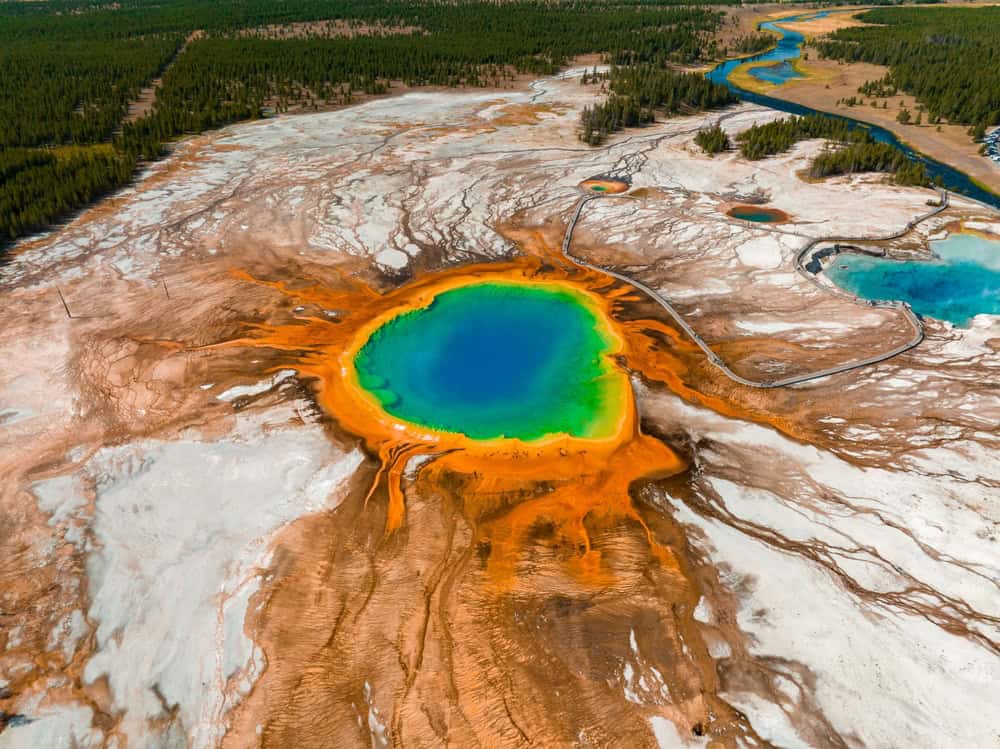
Nestled in Yellowstone National Park, the Grand Prismatic Spring dazzles with its vibrant hues. This hot spring, the largest in the United States, measures approximately 370 feet in diameter. The striking colors—ranging from deep blue in the center to fiery reds and oranges at the edges—are the result of pigmented bacteria thriving in the mineral-rich waters. As you approach, steam rises, adding a mystical aura to this geothermal marvel. Visitors often find themselves mesmerized by the spring’s surreal beauty, making it a must-see attraction in Yellowstone.
Aurora Borealis, Arctic Circle

The Aurora Borealis, or Northern Lights, is a celestial spectacle that graces the night skies of the Arctic Circle. This phenomenon occurs when solar winds interact with the Earth’s magnetic field, creating dancing lights in shades of green, pink, and purple. The ethereal glow can be seen from various locations, including Norway, Iceland, and Canada. Travelers who witness this natural light show describe it as a life-changing experience. The Northern Lights not only captivate with their beauty but also with the science behind their formation.
Great Barrier Reef, Australia

Stretching over 1,400 miles, the Great Barrier Reef is the world’s largest coral reef system. Located off the coast of Queensland, Australia, it comprises over 2,900 individual reefs and 900 islands. The reef is home to an incredible diversity of marine life, including over 1,500 species of fish and 400 types of coral. Snorkeling and diving in these clear turquoise waters offer unparalleled views of vibrant underwater ecosystems. Conservation efforts are crucial to protect this fragile wonder from climate change and human impact.
Mount Everest, Nepal/China

Standing at 29,032 feet, Mount Everest is the highest peak on Earth. Located in the Himalayas on the border between Nepal and China, it attracts climbers from around the world seeking to conquer its formidable heights. The mountain’s snow-capped summit and dramatic ridges are iconic symbols of adventure and challenge. Despite the dangers, including avalanches and extreme weather, many mountaineers consider reaching the top of Everest a pinnacle of achievement. The surrounding Sagarmatha National Park, a UNESCO World Heritage site, adds to the region’s natural allure.
Victoria Falls, Zambia/Zimbabwe
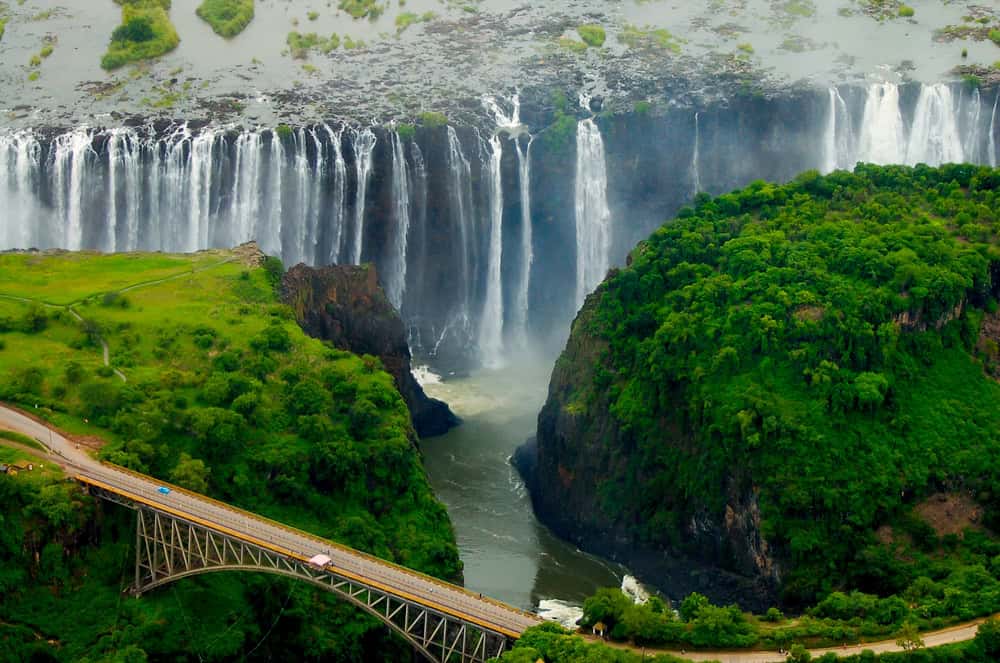
Victoria Falls, known locally as Mosi-oa-Tunya or “The Smoke That Thunders,” is one of the largest and most famous waterfalls in the world. Straddling the border between Zambia and Zimbabwe, the falls span over a mile and plunge 354 feet into the Zambezi River. The sheer power of the cascading water creates a mist that can be seen from miles away. During the rainy season, the falls reach their peak flow, offering an awe-inspiring display of nature’s force. The surrounding rainforest is teeming with wildlife, adding to the falls’ enchanting atmosphere.
Salar de Uyuni, Bolivia
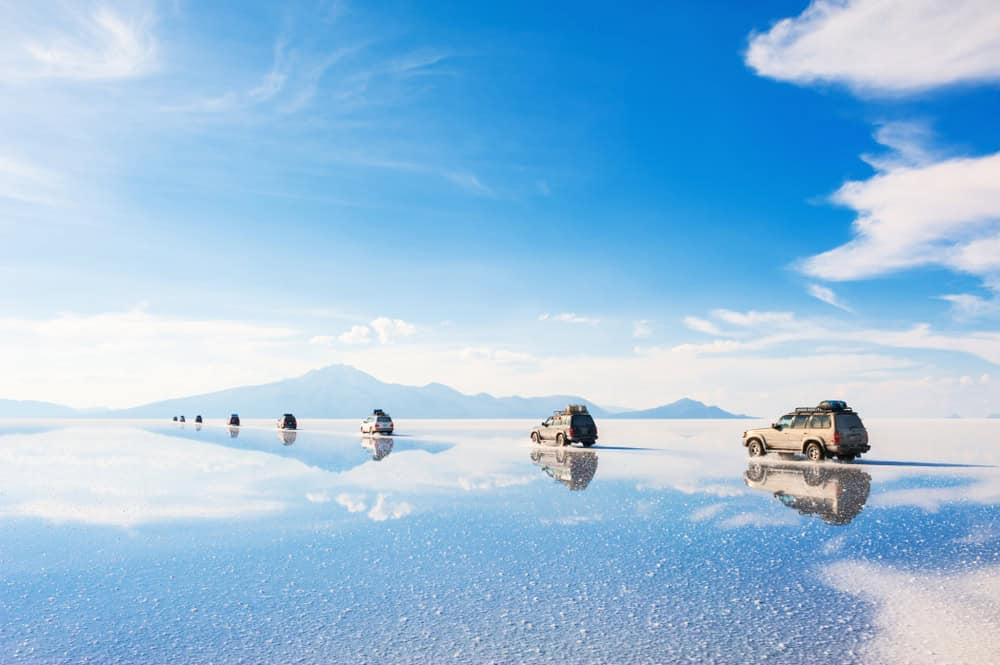
Salar de Uyuni, the world’s largest salt flat, stretches over 4,000 square miles in southwestern Bolivia. This otherworldly landscape was formed from prehistoric lakes that evaporated long ago, leaving behind a vast, flat expanse of salt crust. During the rainy season, a thin layer of water covers the flats, creating a mirror-like reflection of the sky. This natural phenomenon makes Salar de Uyuni a favorite destination for photographers and travelers alike. The salt flats are also rich in lithium, a critical component for batteries, adding economic significance to their natural beauty.
Antelope Canyon, USA
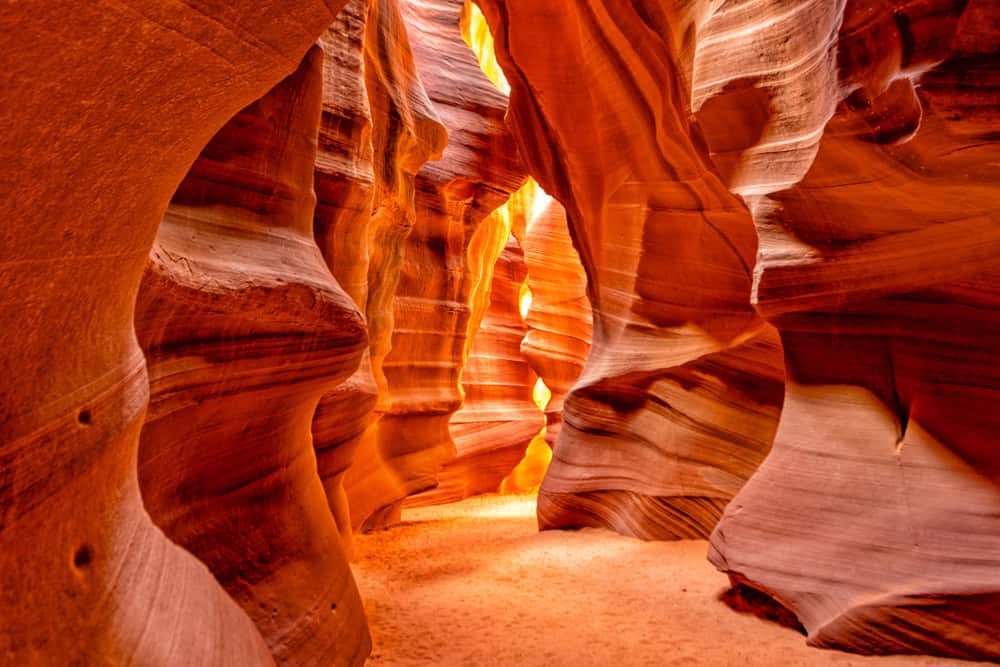
Located in Arizona, Antelope Canyon is a slot canyon renowned for its stunning, wave-like rock formations and vibrant, shifting colors. Formed by the erosion of Navajo sandstone, the canyon’s narrow passageways are illuminated by beams of sunlight that filter through the cracks above. These light beams create a magical play of shadows and highlights, making the canyon a popular spot for photographers. Visitors often describe their experience as walking through a natural cathedral, with the walls appearing to glow in hues of red, orange, and purple
Aurora Australis, Antarctica
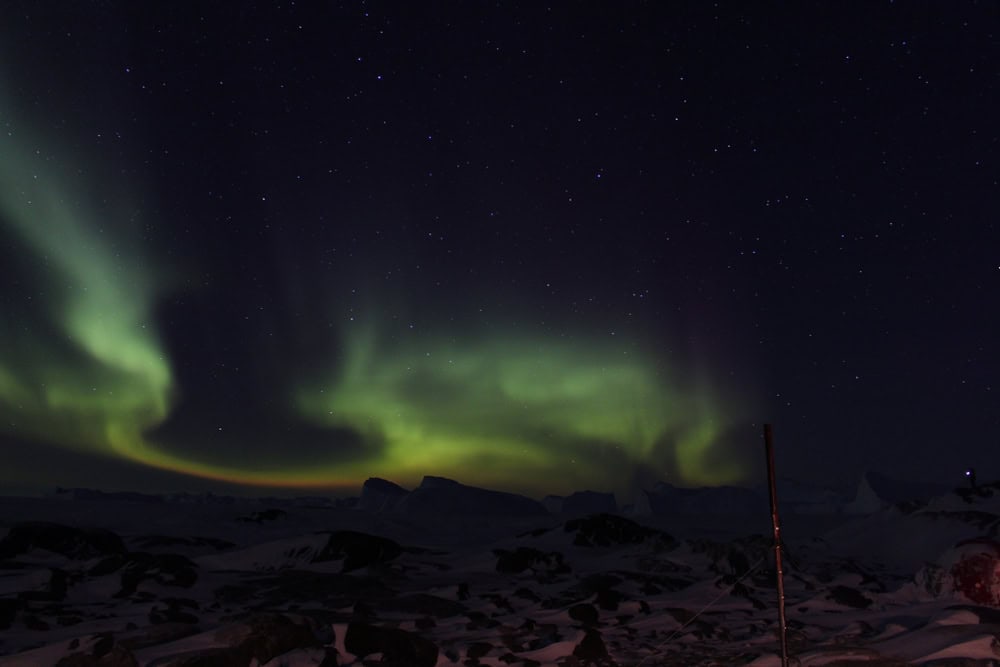
The Aurora Australis, or Southern Lights, is the southern counterpart to the Aurora Borealis. This spectacular light display occurs in the polar regions of the Southern Hemisphere, particularly in Antarctica. Like its northern relative, the Southern Lights are caused by the interaction of solar winds with the Earth’s magnetic field. The result is a mesmerizing dance of colors—greens, blues, and occasionally reds—across the night sky. Observing the Aurora Australis is a rare and breathtaking experience, often limited to scientists and adventurers visiting the remote and icy continent.
Zhangjiajie National Forest Park, China
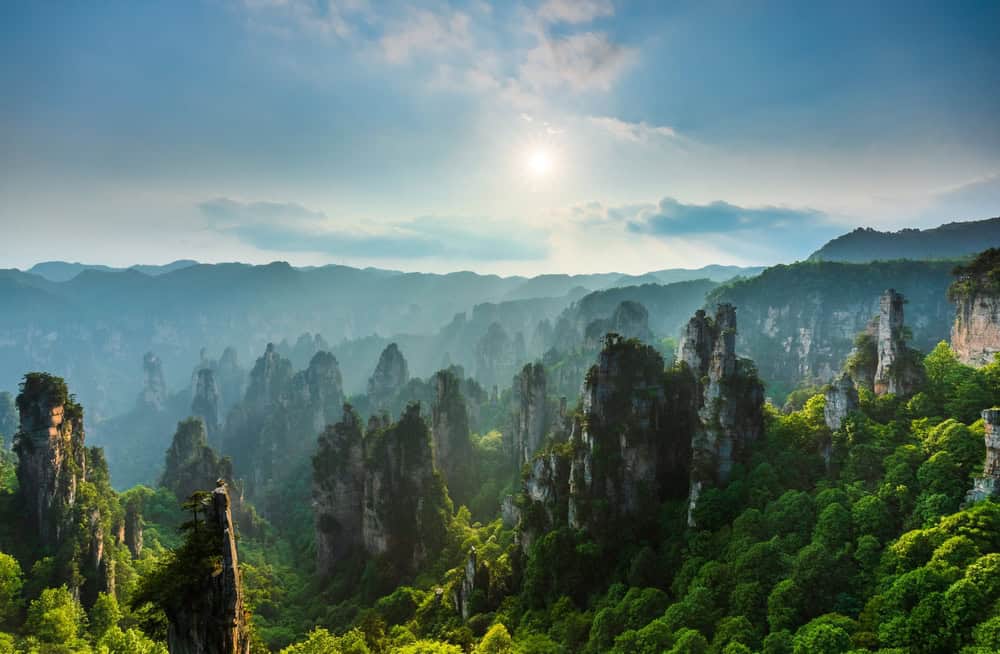
Zhangjiajie National Forest Park, located in Hunan Province, is famous for its towering sandstone pillars. These natural formations inspired the floating Hallelujah Mountains in the movie “Avatar.” The park’s most iconic feature is the 3,544-foot-high Avatar Hallelujah Mountain, which offers stunning views of the surrounding landscape. Covered in lush greenery, the pillars are often shrouded in mist, creating an ethereal and mystical atmosphere. Visitors can explore the park via a series of walkways, cable cars, and glass bridges that provide breathtaking perspectives of this unique terrain.
Pamukkale, Turkey
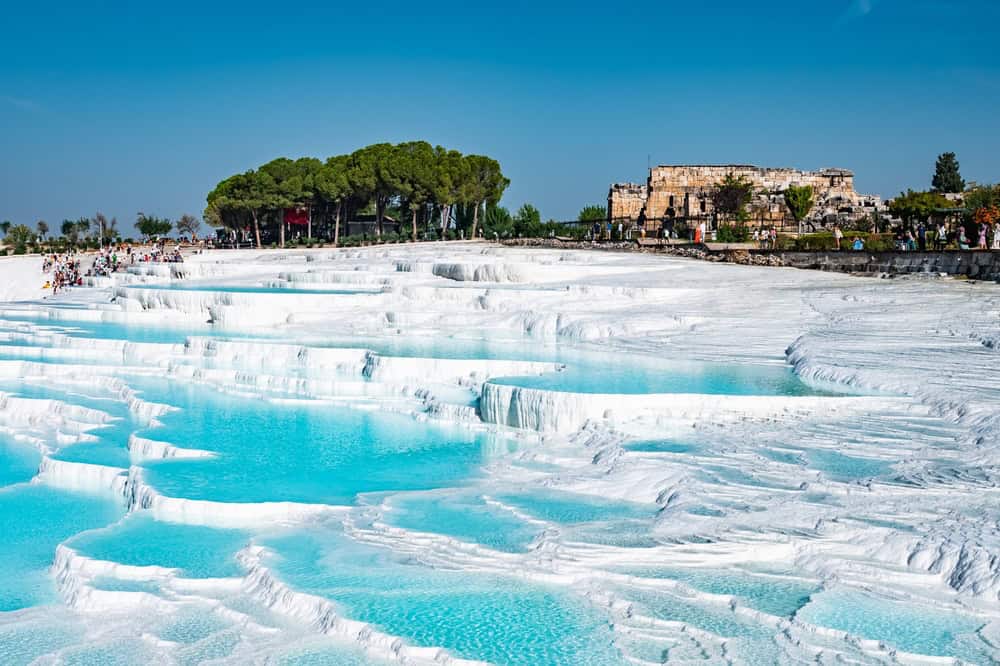
Pamukkale, meaning “Cotton Castle” in Turkish, is a natural wonder known for its white terraces of travertine, a form of limestone deposited by mineral-rich hot springs. Located in southwestern Turkey, these terraces cascade down the mountainside, forming natural pools filled with warm, turquoise water. The stark contrast between the white terraces and the blue pools creates a striking and surreal landscape. Pamukkale has been a spa destination since ancient times, and the nearby ruins of the Roman city of Hierapolis add historical intrigue to this beautiful site.
Waitomo Glowworm Caves, New Zealand

The Waitomo Glowworm Caves in New Zealand are renowned for their unique luminescent inhabitants. These glowworms, known as Arachnocampa luminosa, emit a blue-green light that illuminates the dark caves. Visitors can take guided boat tours through the cave system, drifting silently under a canopy of twinkling lights. The glowworms’ bioluminescence creates a magical and almost otherworldly atmosphere. In addition to the glowworms, the caves feature impressive limestone formations, including stalactites and stalagmites, making Waitomo a must-see natural wonder.
Giant’s Causeway, Northern Ireland
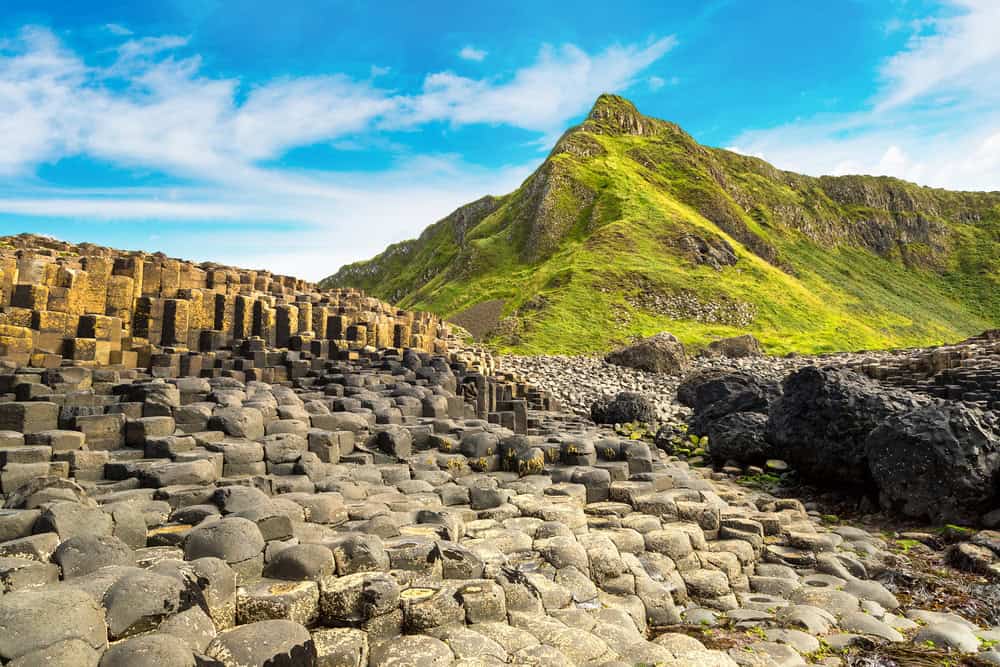
Giant’s Causeway, located on the coast of Northern Ireland, is a geological wonder consisting of approximately 40,000 interlocking basalt columns. Formed by volcanic activity around 60 million years ago, the columns vary in height and create a striking, hexagonal pattern. Legend has it that the causeway was built by the giant Finn McCool to reach Scotland. The rugged coastal scenery, combined with the unique rock formations, makes Giant’s Causeway a captivating destination. The site is also a UNESCO World Heritage site, recognized for its geological significance and natural beauty.
Socotra Island, Yemen
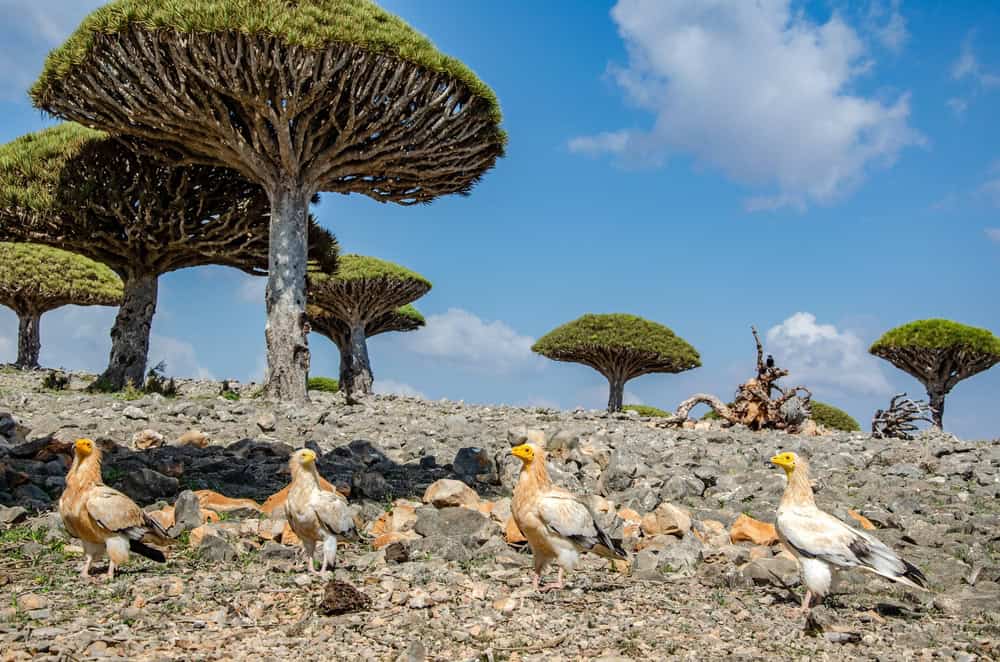
Socotra Island, part of an archipelago in the Indian Ocean, is often referred to as the “Galápagos of the Indian Ocean” due to its unique and diverse flora and fauna. The island’s most famous feature is the Dragon’s Blood Tree, named for its red sap, which has been used for centuries in medicine and dye. The unusual, umbrella-shaped trees give the island an otherworldly appearance. Socotra’s isolated location has allowed many endemic species to evolve, making it a hotspot for biodiversity. Pristine beaches, limestone caves, and towering sand dunes add to the island’s natural allure.
Ha Long Bay, Vietnam
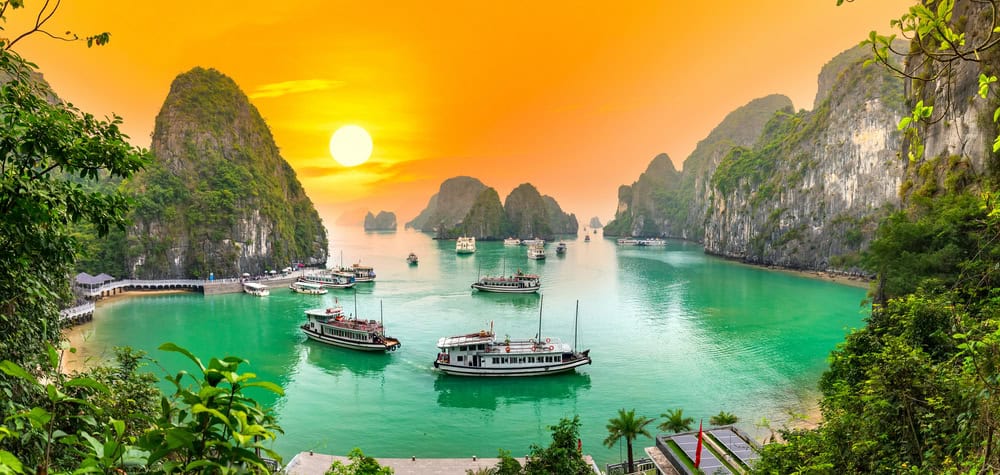
Ha Long Bay, located in northeastern Vietnam, is renowned for its emerald waters and thousands of limestone karsts and isles. These formations, covered in lush vegetation, rise dramatically from the water, creating a stunning seascape. The bay’s name, meaning “Descending Dragon,” is derived from a local legend about dragons sent by the gods to protect the land. Visitors can explore the bay by boat, discovering hidden caves, floating fishing villages, and secluded beaches. Ha Long Bay is a UNESCO World Heritage site, celebrated for its natural beauty and cultural significance.
Uluru, Australia
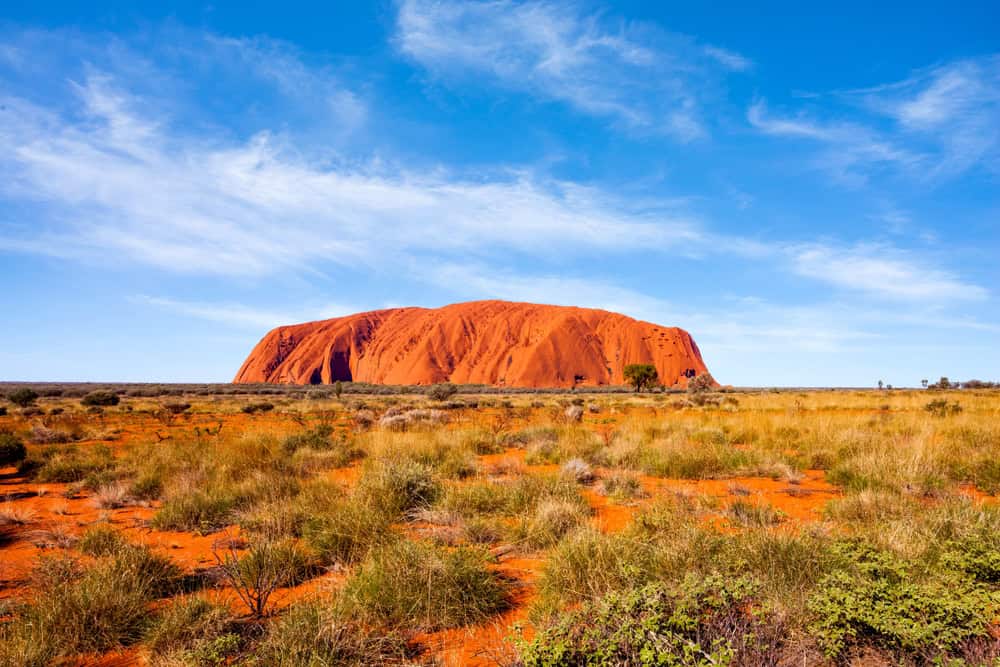
Uluru, also known as Ayers Rock, is a massive sandstone monolith in the heart of the Australian Outback. Rising 1,142 feet above the surrounding plain, Uluru is sacred to the Anangu people, the area’s Indigenous inhabitants. The rock’s color changes throughout the day, glowing red at sunrise and sunset. Uluru’s surface features ancient rock art and waterholes, adding to its cultural and spiritual significance. Visitors can walk around the base, learning about its history and the legends associated with it. Uluru is part of the larger Uluru-Kata Tjuta National Park, a UNESCO World Heritage site.
Plitvice Lakes, Croatia
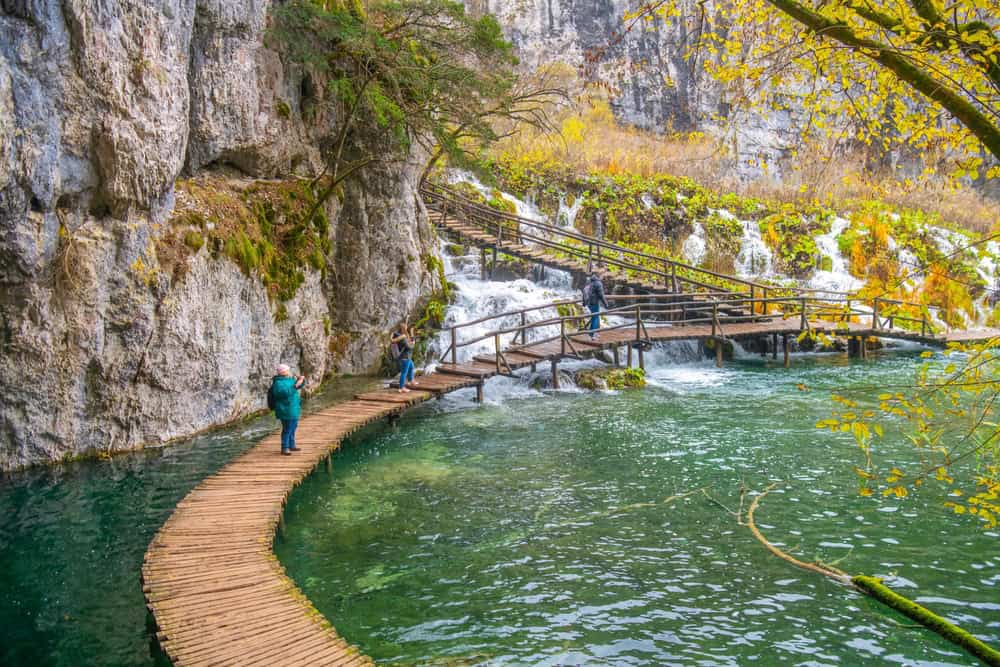
Plitvice Lakes National Park, a UNESCO World Heritage site, is famous for its cascading lakes and waterfalls. Located in central Croatia, the park features 16 terraced lakes connected by a series of waterfalls, all surrounded by lush forests. The lakes’ colors range from azure to green, gray, and blue, depending on the minerals and organisms in the water and the angle of sunlight. Wooden walkways and hiking trails allow visitors to explore this enchanting landscape up close. The park’s rich biodiversity includes a variety of plant and animal species, making it a haven for nature lovers.
Lençóis Maranhenses, Brazil

Lençóis Maranhenses National Park in northeastern Brazil is a unique natural wonder characterized by vast sand dunes interspersed with crystal-clear freshwater lagoons. The park covers an area of over 600 square miles and is best visited during the rainy season, when the lagoons are at their fullest. The stark contrast between the white sand dunes and the turquoise lagoons creates a breathtaking and surreal landscape. Visitors can explore the park on foot, by 4×4 vehicle, or even by taking a scenic flight for a bird’s-eye view of this remarkable terrain.
Ngorongoro Crater, Tanzania
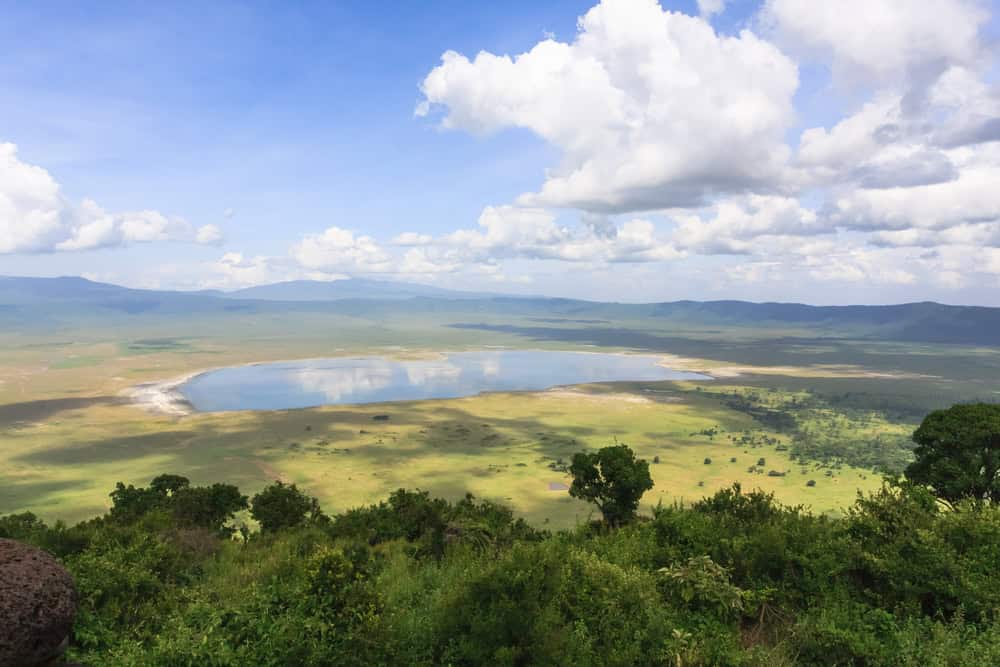
The Ngorongoro Crater in Tanzania is the world’s largest inactive volcanic caldera, formed around 2.5 million years ago. The crater’s floor spans about 100 square miles and is home to a diverse array of wildlife, including the Big Five: lions, elephants, leopards, buffalo, and rhinoceroses. The lush grasslands, swamps, and acacia woodlands within the crater provide ideal habitats for these animals. Visitors can enjoy safari tours, experiencing close encounters with wildlife in this natural enclosure. The Ngorongoro Conservation Area, a UNESCO World Heritage site, also preserves the rich archaeological history of early human ancestors.
Reed Flute Cave, China
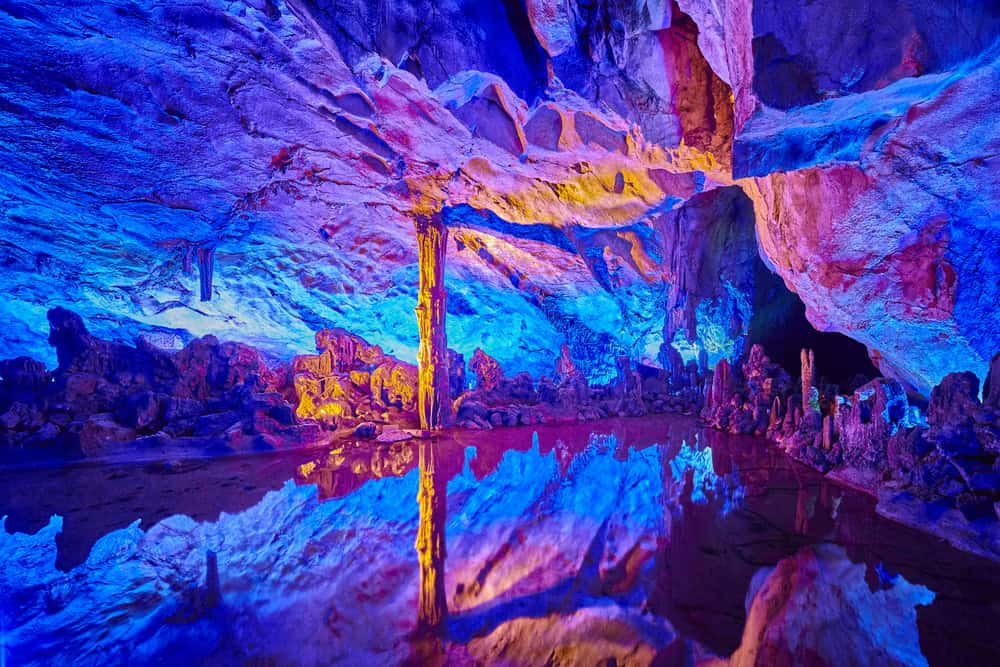
Reed Flute Cave, located in Guilin, China, is a natural limestone cave adorned with stunning stalactites, stalagmites, and rock formations. Named after the reeds growing outside, which can be made into flutes, the cave has been a popular attraction for over a thousand years. Multicolored lighting highlights the cave’s intricate formations, creating a magical and surreal underground landscape. Visitors can explore the cave via well-lit pathways, marveling at the natural artistry of the formations. Reed Flute Cave’s beauty and historical significance make it a must-see destination in China.
Marble Caves, Chile

The Marble Caves, located on General Carrera Lake in Patagonia, Chile, are a series of stunning, naturally sculpted caves made of solid marble. The turquoise waters of the lake, which change color depending on the weather and time of year, reflect off the cave walls, creating a mesmerizing display of light and color. The caves can be explored by boat or kayak, offering visitors an up-close view of the swirling patterns and intricate shapes carved by centuries of water erosion. The Marble Caves’ remote location and ethereal beauty make them a hidden gem in the natural world.
This article originally appeared on Rarest.org.
More From Rarest.Org
Throughout American history, some laws have stood out not only for their strangeness but also for their unexpectedness. These bizarre regulations, often rooted in unique local customs and concerns, provide a fascinating glimpse into the quirky side of legal history. Read more.
Forza Horizon 5 offers a dazzling array of high-performance cars, each with its own unique appeal and staggering price tag. Among the vast selection, some cars stand out not just for their speed and design but also for their eye-watering in-game value. Read more.



